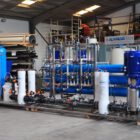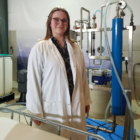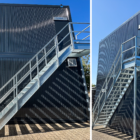Hydrogen peroxide (H₂O₂) is one of the most versatile chemicals in industrial water and wastewater treatment. It is mainly used due to its strong oxidative properties and its ability to disinfect, decolorize and break down organic compounds. Hydrogen peroxide offers an environmentally friendly alternative to many other chemicals, as it only decomposes into water (H₂O) and oxygen (O₂) without leaving any harmful by-products.
Its wide range of applications extends from the oxidation of pollutants, the disinfection of process water, odour and color removal in waste water to special applications such as precipitation and flocculation in CP plants. precipitation and flocculation in CP plants or in Advanced Oxidation Processes (AOPs). H₂O₂ plays a central role in the field of industrial water treatment, particularly due to its high reactivity and environmental compatibility.
Table of contents
Chemical properties of hydrogen peroxide
Hydrogen peroxide is a chemical compound of hydrogen and oxygen with the molecular formula H₂O₂. It has the following characteristic properties:
Molecular structure:
- H₂O₂ consists of two oxygen atoms, which are linked to each other via a peroxide bond (O-O), and two hydrogen atoms.
- The peroxide bond is relatively unstable and easily cleaved, which explains the chemical reactivity of the molecule.
Physical properties:
- Physical state: Liquid at room temperature.
- Color: Colorless.
- Odor: Odorless.
- Density: Depending on concentration approx. 1.11 g/cm³ (at 30 % H₂O₂ solution).
- Solubility: H₂O₂ is completely miscible with water and forms a stable solution.
Reactivity:
- Hydrogen peroxide is a strong oxidizing agent that is able to absorb electrons from other substances and thereby oxidize them.
- Water (H₂O) and oxygen (O₂)are produced during decomposition .
- This reaction is accelerated by catalysts such as metal ions (e.g. Fe²⁺, Mn²⁺) or light.
Technical applications of hydrogen peroxide in water technology
1. oxidation of pollutants
Hydrogen peroxide is often used in water treatment as an oxidizing agent to destroy dissolved pollutants or to convert them into a more easily removable form:
Reduction of heavy metals:
H₂O₂ oxidizes heavy metals such as iron (Fe²⁺ → Fe³⁺) or manganese so that they precipitate as hydroxide flakes and can then be removed by sedimentation or filtration.Removal of sulphides and nitrites:
The oxidation of sulphur compounds (S²- to SO₄²-) and nitrogen compounds (NO₂- to NO₃-) breaks down odor-forming and toxic substances.Degradation of organic compounds:
Hydrogen peroxide decomposes many organic pollutants, such as phenols, aldehydes or PAHs (polycyclic aromatic hydrocarbons), into smaller, less toxic components.
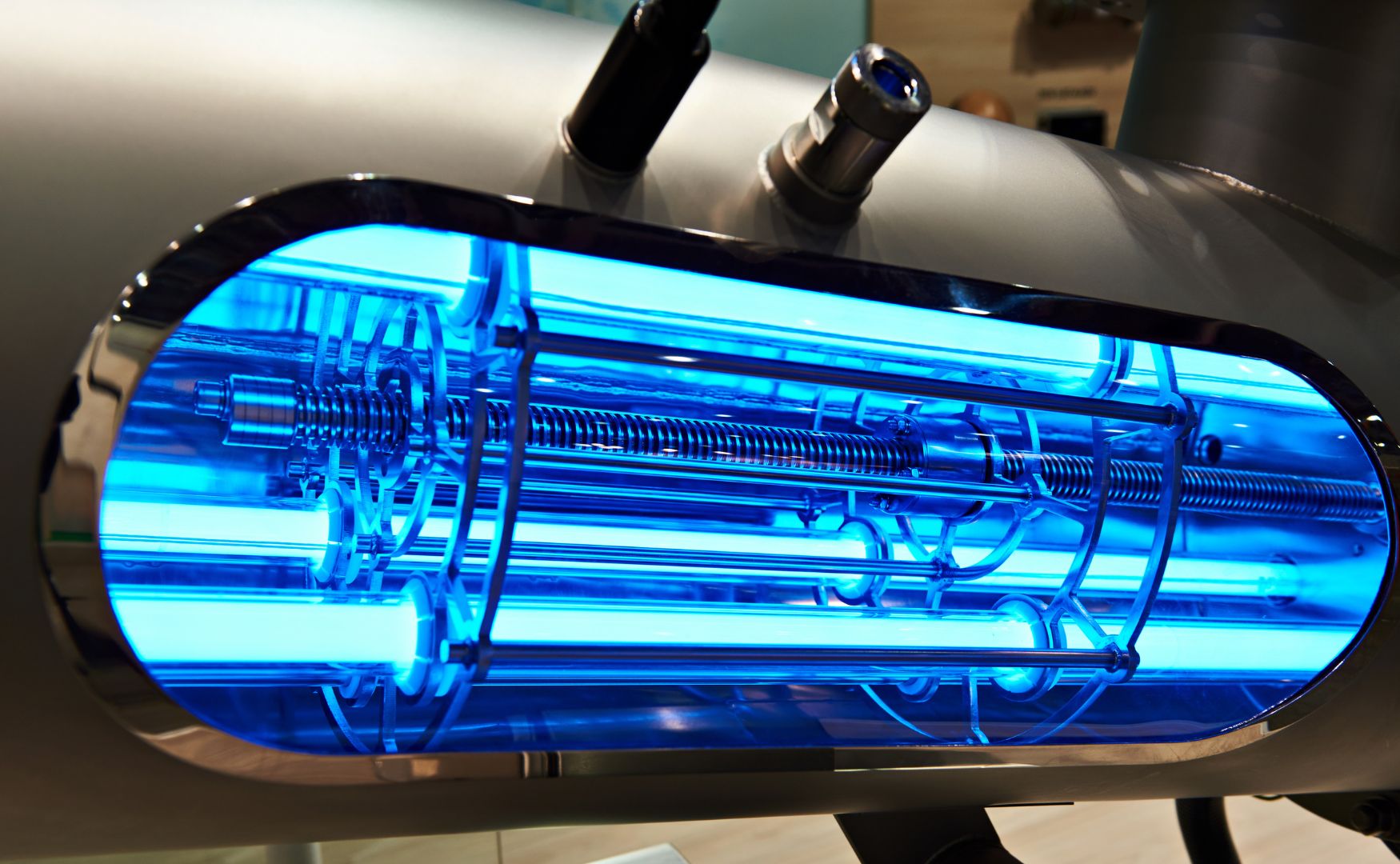
Photo: Oxidation of pollutants using UV radiation and hydrogen peroxide (process: ALMA OXI UV)
2. advanced oxidation processes(AOPs)
In combination with UV light or ozone (O₃), hydrogen peroxide forms so-called hydroxyl radicals (OH-), which are among the strongest oxidizing agents:
How it works:
H₂O₂ reacts to OH- radicals under the influence of UV radiation or ozone.Applications:
- Degradation of micropollutants such as pharmaceuticals and pesticides.
- Removal of colorants and odors.
- Treatment of water for high-purity applications (e.g. demineralized water or ultrapure water).
3. disinfection
Hydrogen peroxide is an effective means of disinfecting water. Unlike chlorine or ozone, H₂O₂ leaves no toxic by-products:
Use in cooling water circuits:
Reduces the formation of biofilms and prevents microbial growth, thereby optimizing system performance.Germ reduction in process and drinking water:
Hydrogen peroxide is effective against bacteria, viruses and fungi and is used in the food and pharmaceutical industries for hygienic water treatment.
4. decolorization and odor reduction
In industrial wastewater, e.g. from the textile industry or paper production, hydrogen peroxide is used to remove dyes and neutralize odours:
- Decolourization: H₂O₂ oxidizes chromophores (colour-giving structures) and breaks them up, reducing the color.
- Odour neutralization: Oxidation of odour-forming substances such as ammonia or sulphur compounds.
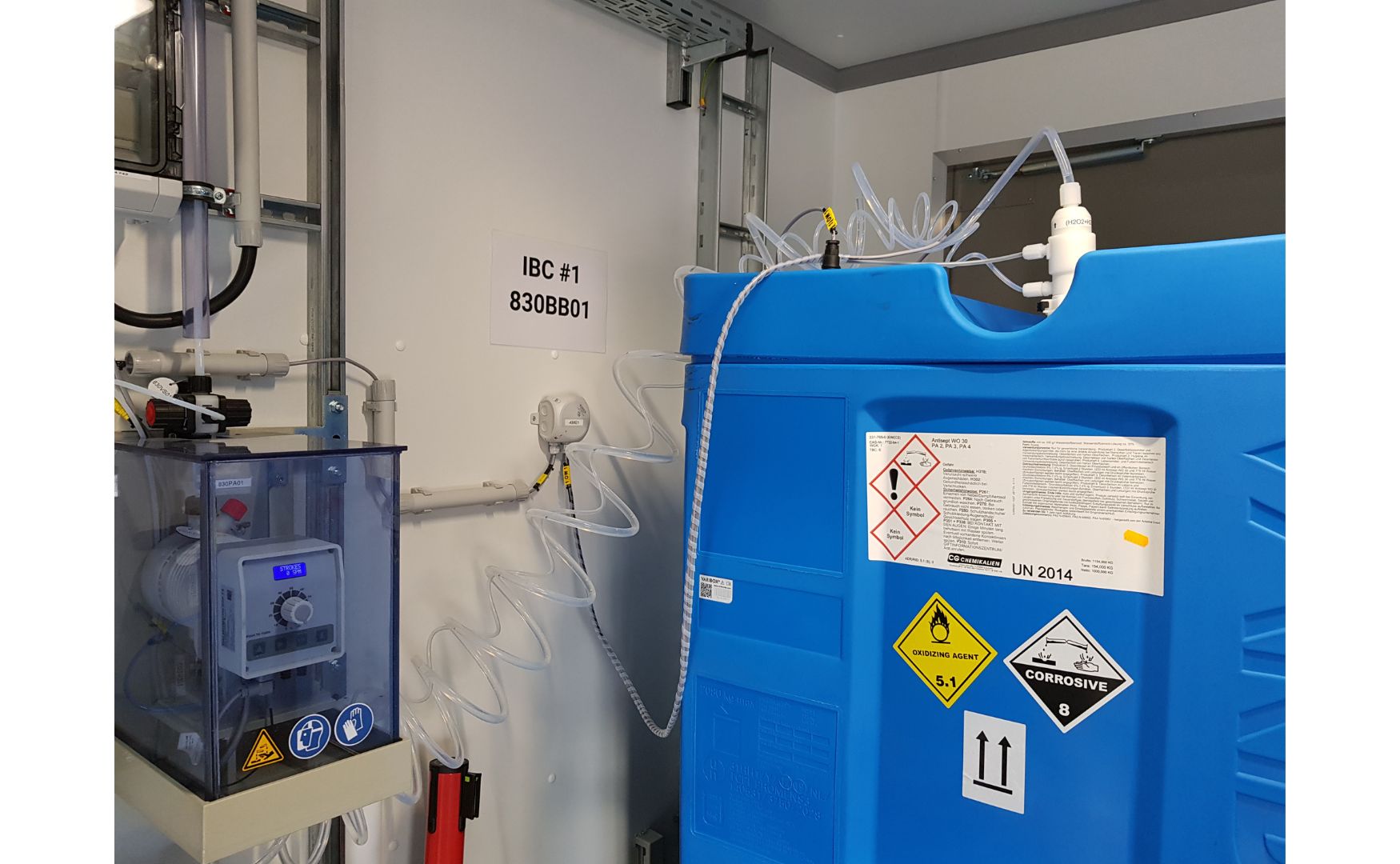
Photo: Dosing station for hydrogen peroxide with WHG collection tray
Advantages of hydrogen peroxide
- Environmentally friendly: Decomposes into water and oxygen without leaving harmful residues.
- Wide range of applications: Effective for many pollutants, organic compounds and microbial contamination.
- High oxidation performance: In combination with AOPs, extremely effective against poorly degradable impurities.
- Safety: When handled correctly, less toxic than many other oxidizing agents such as chlorine.
Challenges in the application
- Stability: Hydrogen peroxide is sensitive to metal ions, light and heat, which can cause it to decompose catalytically. Stable storage requires dark, cool environments and suitable container materials (e.g. plastic, stainless steel).
- Handling: Highly concentrated H₂O₂ solutions are corrosive and can cause burns or material damage.
- Costs: Large-scale use can be cost-intensive due to chemical dosing.
Conclusion
Hydrogen peroxide (H₂O₂) is an indispensable agent in industrial water and wastewater treatment. It impresses with its versatility as an oxidizing agent, for disinfection, decolourization and odour neutralization. Especially in Advanced Oxidation Processes (AOPs) hydrogen peroxide proves its strength through the generation of hydroxyl radicals (OH-), which effectively reduce even pollutants that are difficult to break down.
Due to its environmentally friendly decomposition in water and oxygen, H₂O₂ is a sustainable solution for the treatment of water. Despite the challenges of storage and handling, hydrogen peroxide remains one of the most important chemicals in modern water technology due to its high efficiency and environmental compatibility.
For further information on our products, please feel free to contact us at any time!




